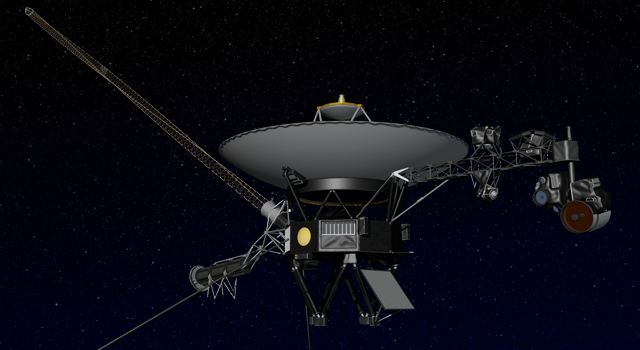Last week, NASA announced that it was experiencing problems with Voyager 2, the spacecraft launched in the 1970s which has since left the solar system and journeyed into interstellar space. In the last few days engineers have been able to stabilize the craft and return to operations as normal.
The first indications that something was amiss with the craft occurred on January 25, when Voyager was supposed to perform a rotation maneuver to calibrate its magnetic field instrument. The craft should have rolled over 360 degrees as part of the calibration. However, the craft couldn’t perform the maneuver, and because of this two power-hungry systems remained on and activated longer than was needed, consuming more power than they should have.
Voyager 2 only has a very limited amount of power. It uses radioactive fuel to produce heat, which is converted to electricity. But as the fuel decays, it produces less and less power over time. To conserve valuable power, if power levels drop too low the craft then turns off non-essential systems, including its scientific instruments, in order to protect vital functions.

When the rotation maneuver failed, Voyager 2 turned off its scientific instruments, rendering it incapable of collecting new data. The engineers had to work to try and fix the issue from the ground, which is particularly difficult as the craft is so far away that it takes 17 hours for commands from earth to reach it, and a further 17 hours for the ground team to see the craft’s response.
However, despite the challenges, the team was able to get Voyager 2’s instruments running once again. “Mission operators report that Voyager 2 continues to be stable and that communications between Earth and the spacecraft are good,” NASA reported in an update. “The spacecraft has resumed taking science data, and the science teams are now evaluating the health of the instruments following their brief shutoff.”
With its instruments back online and the craft functioning fully, Voyager 2 can continue its mission of collecting data about the vast space between stars, called interstellar space. One of a pair of probes launched in 1977, Voyager 2 is now one of the furthest man-made objects from Earth, located more than 122 times further from the Earth than the sun is.
Editors' Recommendations
- Beyond our solar system, Voyager 1 picks up the hum of interstellar gas
- Voyager 2 spacecraft is going solo for the next 11 months
- It will take 20,000 years for our earliest probes to reach Alpha Centauri




